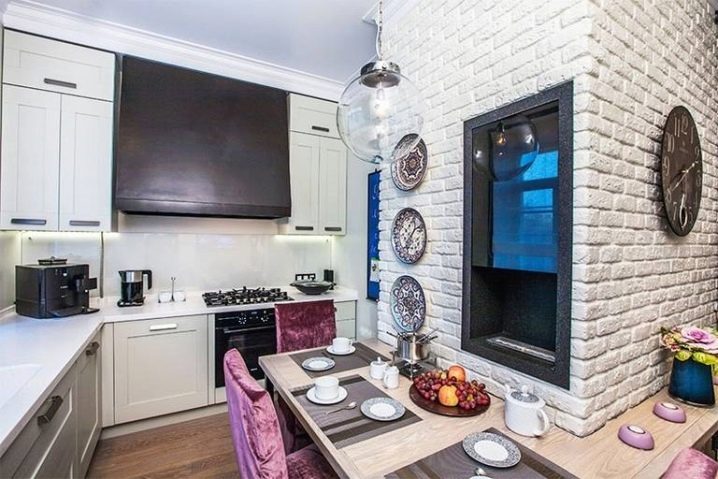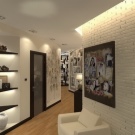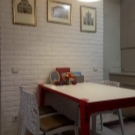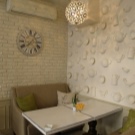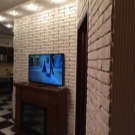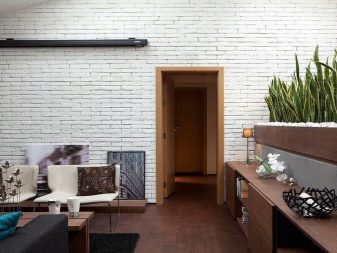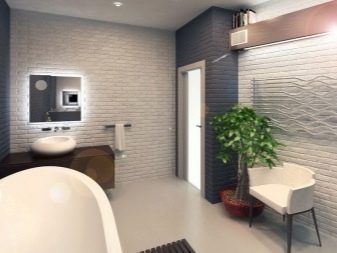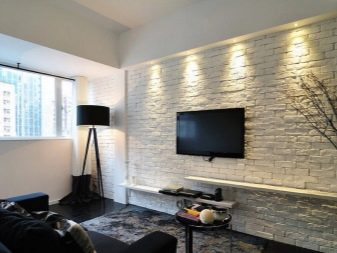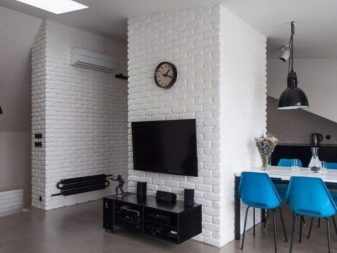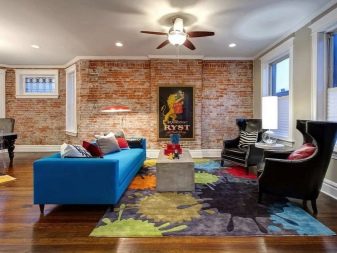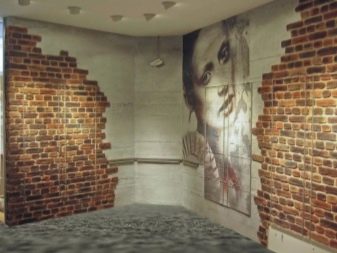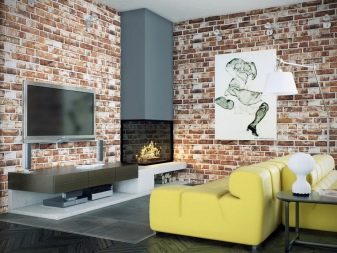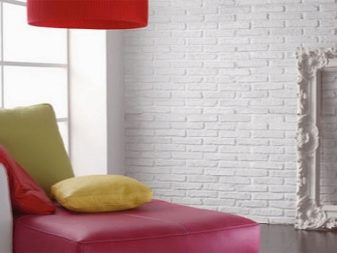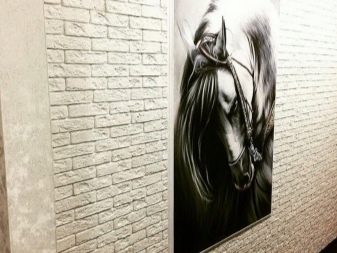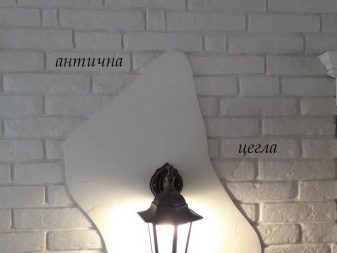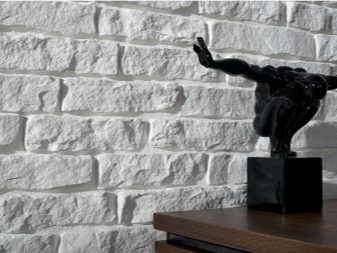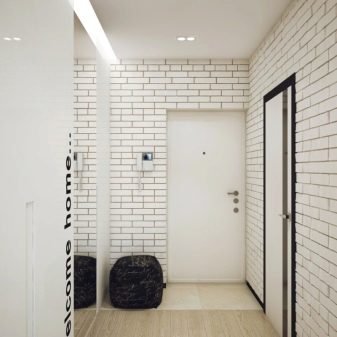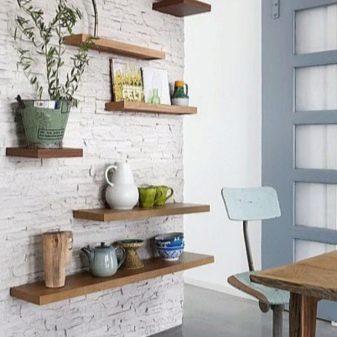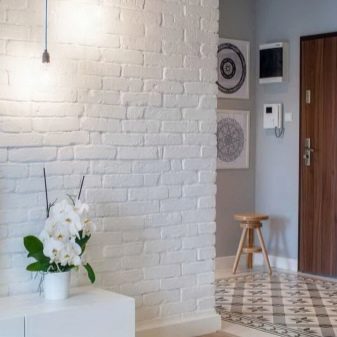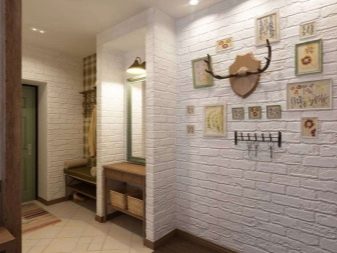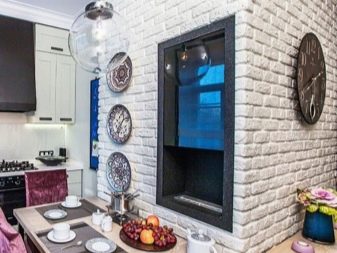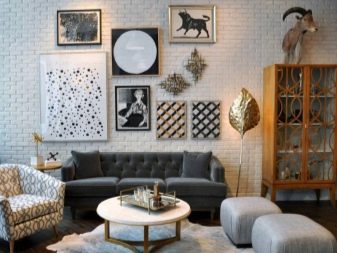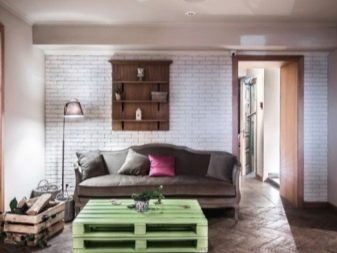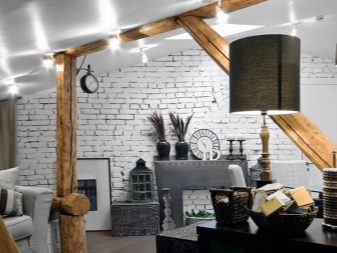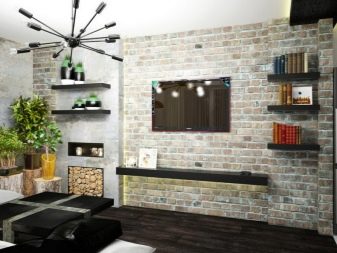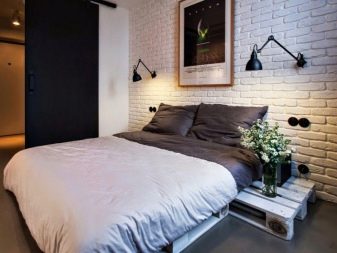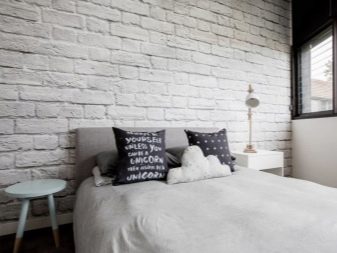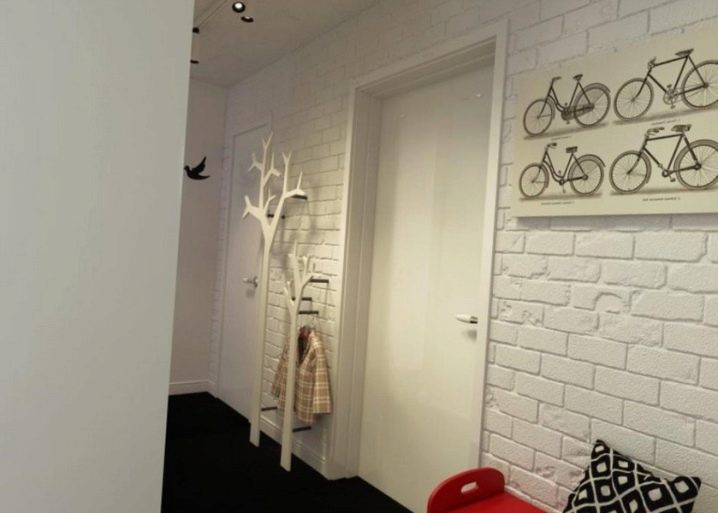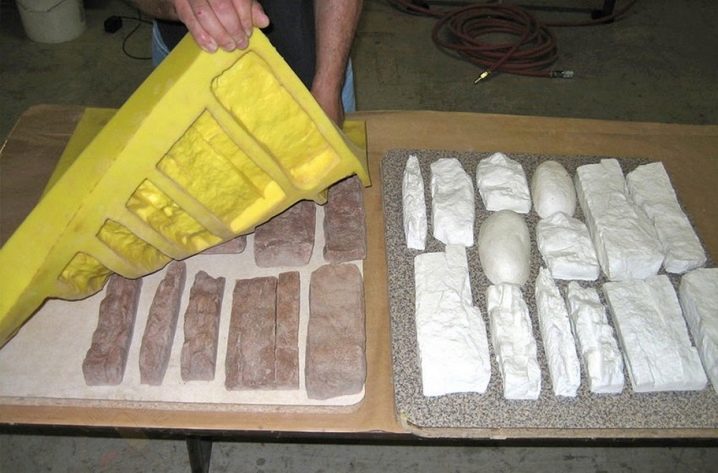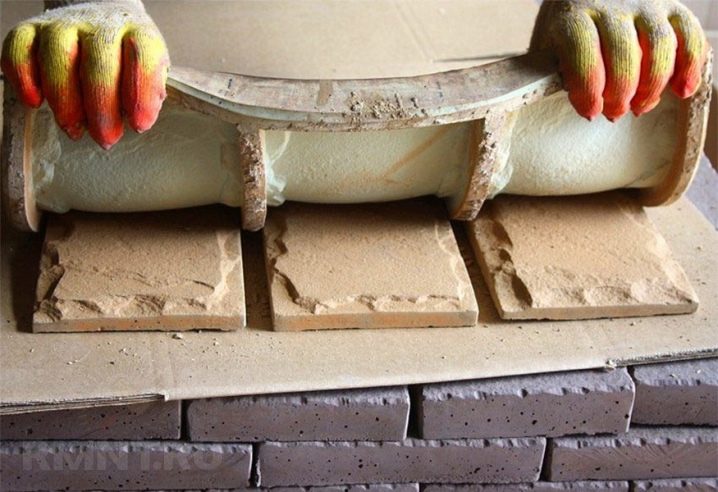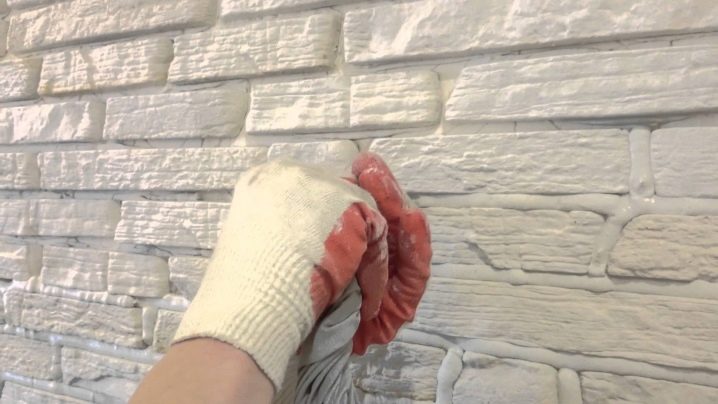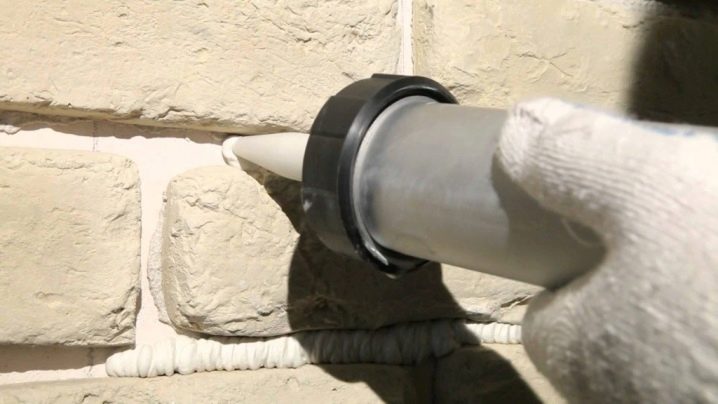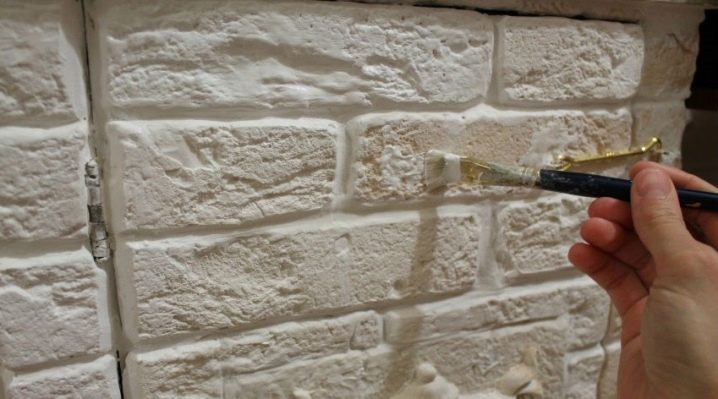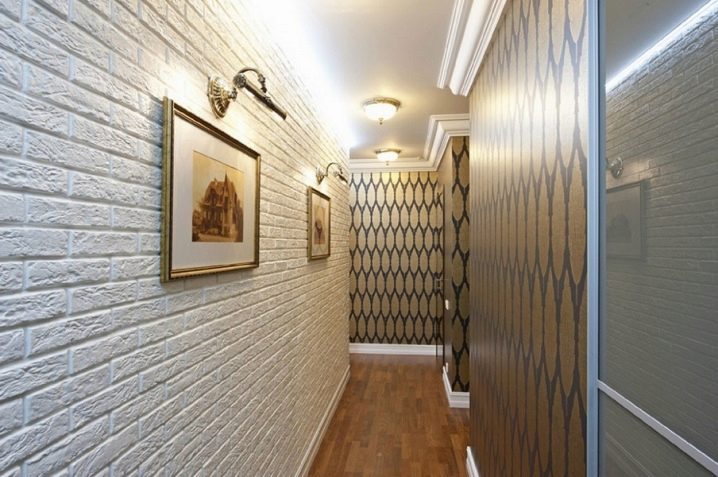Gypsum brick: features and application in the interior
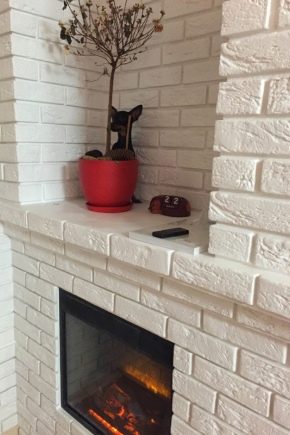
In modern design is very popular decoration plaster bricks. This material allows not only to save a useful space of space, but also looks aesthetically pleasing, filling the space with an atmosphere of home comfort. Thanks to a huge selection of colors and textures, these panels are ideal for any style.
Advantages and disadvantages
Gypsum brick is a unique building material with different shapes and structures. Today it is widely used for interior decoration, decorating both the entire surface and individual sections.Beautifully looks interior, in which there is a combination of brickwork with wallpaper and plaster.
The main advantages of this type of brick include the following points.
- Environmental friendliness. The material is made exclusively from natural ingredients, so it does not emit harmful substances and ensures safe operation for human health.
- Affordable price. Unlike other materials, decorative brick made of plaster is cheaper. It is often chosen as a budget cladding.
- Attractive appearance. The product is produced in various sizes and colors, it can have both a smooth and relief structure. This allows it to be used to implement any design ideas.
- Convenient installation. Plates are easily selected for different types of surfaces and installed in a simple way. It is quite realistic to perform such facing with your own hands, without resorting to the help of specialists.
- A light weight. Walls decorated with plaster bricks are not subject to deformation.
As for the flaws, this material is unstable to moisture and mechanical damage, so the installation of plates must be carried out carefully to avoid crumbling.If, during operation, the tile has burst, then it can be quickly replaced with a new one, without disturbing the integrity of the entire finish.
Design and styles
Modern interior provides for finishing with natural materials, but they are often expensive, so many owners of apartments and country houses prefer artificial brick made of plaster. This facing is decorated not only with the surface of the walls, but also with door, window openings, landings and arches. Due to the fact that the material is produced with a glossy, matte, embossed and flat surface, it can be used for any stylistic direction, ranging from classic to modern.
At the moment, the following types of design with plaster bricks are in fashion.
- Romance. For many, bricklaying is associated with an uncomfortable and brutal setting that creates the impression of being on the street. But if you choose the right shade and texture of bricks, as well as make a beautiful layout of the rows, you can get an unusual and original interior. In order to fill the space with a romantic atmosphere, it is necessary to select delicate paints for decoration, which would be combined with the colors of textiles and floor covering.This design is characterized by beige, milky tones and good lighting, providing a play of colors on the surface of an artificial stone. In addition, small statuettes, vases of flowers and openwork curtains must be present in the decor.
- Pop Art. This style, as a rule, like emotional and open personalities. In space, in this case contrasting tones should prevail. Bright furniture upholstery and white brick perfectly complement each other. It looks interesting in the interior and the combination of yellow, green and white. Strengthen the texture of the game can be, using a rough texture of the finish with velor upholstery of sofas and chairs.
- Gothic. Choosing this direction, it is not necessary to create in the room the dull atmosphere of medieval castles. It is enough to single out "old" separate fragments. A good solution would be a multi-colored masonry panels. For example, it will look beautiful finish, where alternate black, milky and beige. To complement the design will help the wooden beams on the ceiling and furniture with a glossy surface.
- Scandinavian style. The brickwork in this design is considered the main accent.It is recommended to decorate walls with plates of natural colors, avoiding bright contrast. Rooms with walls lined with gray and black brick look great. You can also apply pastel shades. So that everything in the interior is harmoniously combined, it is necessary to select the color of the surfaces under the furniture and textiles. The severity of the interior will help to hide additional decor items in the form of paintings, beautiful chandeliers and vases.
- Ethnic. This is a rather interesting design, in which there is at the same time a light rigor and rich bright colors. In this case, the ocher gypsum brick must be combined with unusual ceramics, carpets and souvenirs brought from African and Asian countries. On the walls, you can make separate fragments laid out in the form of hieroglyphs or artifacts.
- Loft. Brick walls in this style are considered the main interior decoration. The space of the room should be free and not have partitions. Decor is recommended to make laconic objects, avoiding unnecessary decorations. It is desirable to lay out the surface with a monochromatic plaster brick with an uneven surface.Colors of facing are allowed various, beginning from snow-white and finishing bright sand and red.
Application
Gypsum brick is very popular in interior decoration, but unlike its "brothers", it is much inferior in performance, therefore it is recommended for rooms with normal temperature and humidity levels. You can decorate a beautiful interior with a decorative material everywhere, but the most important thing is to choose for it the “right” place and follow the rules of operation.
Designers most often use plaster fragments in the hallway, making out bearing structures. Decorative panels are also suitable for decorating window, doorways, niches and arches. Gypsum brick of various textures and colors gives the design extra warmth and comfort, so you can choose it for interior decoration in the apartment and in a private house. An unusual solution would be brickwork in the bedroom, living room and children's room. If a country house is multi-storey, then a staircase can be decorated with a similar finish.
Since the material is "afraid" of moisture, it is not recommended to be placed in the bathroom. Gypsum cladding is not suitable for areas near the sink (kitchen apron), fireplaces.Despite such limitations, the product of plaster can be originally combined with wood and marble, decorating them as the entire surface of the walls, so creating separate compositions.
How to make yourself?
Today, the construction market is represented by a chic assortment of gypsum bricks, but if desired, decorative panels can be easily made with your own hands at home. To make them, you must have the following materials:
- powdered gypsum;
- paraffin;
- forming clay;
- silicone sealant;
- cardboard box.
Since gypsum is part of the brick, it is necessary to purchase raw materials of a grade not lower than GF 10, since it has increased strength and resistance to external influences. In addition, for the manufacture must be applied silicone form, which is sold in finished form. If there is none, then it is easy to make it yourself from sculptural clay, which is rolled out to a thickness of not more than 20 mm and form prints for reflux. Forms can also be made from paraffin. To do this, it is melted, then poured into boxes of the desired size.
After the forms are prepared, the process of creating decorative bricks is performed.
- Gypsum powder poured into a container, add water.Everything is thoroughly mixed until a homogeneous consistency.
- The forms in which it is planned to manufacture the material are oiled or greased. This will allow you to easily remove the frozen fragments in the future.
- The mixture is poured into a form, shaken and evenly distributed. Then, according to the instructions specified by the manufacturer, wait until the plaster hardens.
In the case when the design provides for the use of colored bricks, then during the preparation of the mixture you need to add a color scheme. In addition, after making a brick, it can also be coated with a special mortar that gives texture and shine.
How to lay?
Since the gypsum brick is easy to install, it is quite possible to carry out its installation with your own hands. You can put decorative material in two ways: dry (masonry is done with rails and bolts) and wet (fragments need to be glued to the wall with a special compound). Regardless of the chosen technology, before laying a brick, you should prepare the work surface well. This procedure is carried out in stages.
- The alignment of the base is done first.To eliminate all defects, it is recommended to putty the walls.
- Then the base is cleaned of dirt, dust and grout is performed. At this stage it is also important to sort the tile and select its size. If finishing of uneven or convex surfaces is required, the bricks should be cut using a hacksaw.
When the walls are ready for lining, then begin the process of laying. The most reliable is the dry method of installation, but it requires adherence to special rules and technologies.
- The room of the apartment is measured and in one of its corners a wooden rail is fixed, which will serve as the beginning for the installation of fragments. After attaching the vertical rail an opening is formed. It laid tile. Installation should be carried out from top to bottom. All parts are mounted on bolts or screws.
- Then, when the first row is laid out, re-measure the distance, which is equal to the width of the brick, and continue to work until the entire surface is faced.
In addition, the gypsum brick can be glued using the wet method of calculation. To do this, first the exact marking of the rows is done, especially when it comes to finishing with different elements.If the wall will be laid out by the picture, then the fragments must be spread out in advance on the floor. Then a glue solution is prepared in a small amount (it must be kneaded in stages, since a large volume may solidify and become unsuitable). Glue is applied to the brick and tightly pressed to the surface.
In order to make a minimum of mistakes during self-laying and to get a solid lining that would reliably last a long time, it is also important to take into account the following nuances:
- Gypsum brick is a rather fragile material, therefore, during its installation, care must be taken, otherwise the panels may give chips and they will overrun;
- for brickwork in the kitchen, the width of the joints must be at least 10 mm, which will save material;
- the lower sections of the walls, which after the repair will be covered with furniture, can be laid out with scraps;
- while sticking a brick, it should be gently pressed into the surface, performing rotational movements, which will allow excess glue to come out;
- glue, which is used for the installation of plaster brick, has the ability to dry quickly, so for 30 minutes you need to have time to clean all the excess adhesive and smooth out the seams.
What paint can you paint?
Over time, the interior of the room requires renovation, so if the walls are decorated with plaster bricks, you can give it a second life. For this decorative material is sufficient to cover with acrylic or silicone paints. Painting is also allowed and water-based mixtures or water-soluble varnish. You can also paint plaster fragments before laying them, this allows you to give the material a brighter and more brilliant look. If you plan to paint the old lining, then the brick must first be well polished, otherwise the paint will crumble.
It is recommended to paint a plaster brick in three layers. This will make its color more saturated and spectacular. After painting the decorative surface, it is also necessary to additionally coat it with a protective varnish.
Beautiful examples in the interior
Recently, there are many design options using gypsum bricks. Such decorative decoration will look beautiful even without extra furniture. Therefore, brick masonry is often replaced with furniture with wardrobe and bulky walls. To give the room an unusual style and fill the space with comfort, you can use the following examples of interior design.
- For the hall. A good solution in this room will be the decoration of the walls with plaster brick in a warm color palette. Sand and delicate shades of the surface will emphasize the geometry of space in a special way. To the beauty of artificial stone is not lost on the general background, it is enough to place a coffee table and a large corner sofa out of furniture. You can finish not only on one of the walls, but also decorate the side corners near the entrance with fragments or make the decor in the form of columns imitating a natural stone.
- For the corridor. It will be interesting to look in the hallway or corridor brickwork, laid out on the floor in the form of plinths. Decorative panels can also decorate the edges of the walls directly at the entrance. It is advisable to choose light colors for lining, since a dark brick can visually reduce a small room.
- For the bedroom. In this room it is necessary to create the effect of free space and airiness, so the shades for brick finishing are selected in accordance with the basic colors of the interior. Well suited for a bedroom pacifying and restrained tone. Beautiful will look like a combination of white and sand bricks.On a large wall, you can also make masonry plates with the effect of antiquity. In this case, the room must be present furniture made of wood and glass decor.
How to lay your own brick plaster brick, see the next video.
